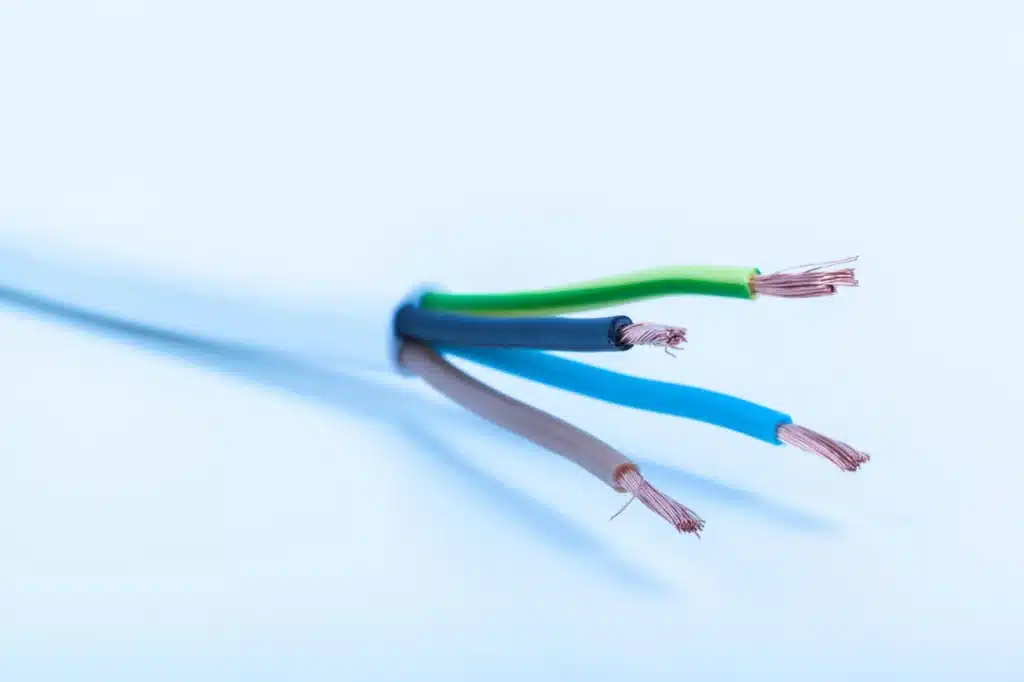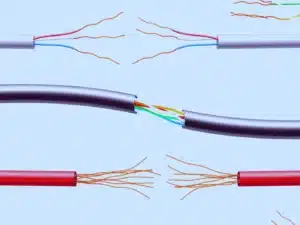Have you ever faced confusion about the difference between line and load wires? Misidentifying them can cause circuit failures or hazards. While DIY electrical work like replacing outlets or installing GFCI outlets can save money, it requires a solid understanding of safety and wire roles. Each wire serves a unique purpose, and knowing these differences is essential for safe upgrades. This guide explains line vs load wire clearly for confident repairs.
Line vs Load Wire Definition
A line wire is the incoming connection that carries electricity from the source to a device or appliance, providing the initial power supply. A load wire is the outgoing connection that allows the current to move along the circuit, traveling further to the next component in the chain, ensuring the continuation of the energy flow.
Understanding the difference between these wires is essential for working safely on electrical systems and preventing potential issues during repair or installation projects.
What is a line wire?
The line wire connects your utility company’s lines to the electrical distribution panel in your home, delivering power to the breakers and designated boxes. These wires, always “hot,” carry electrical current to keep your home powered.
Typically hidden behind walls, they may be surface mounted in unfinished spaces like attics or garages. Acting as the supply for your home’s electricity, line wires are essential for maintaining a reliable flow of power.
What Is a Line Wire Used For?
When dealing with electricity in your home, understanding the purpose of line wires is essential. From my experience working on wiring projects, these wires play a key role in delivering power efficiently throughout a building. Let’s break this down into simpler terms.
- Line wires are the starting point for power in your house. They connect the source of electricity from the property—often coming from an outdoor transformer—and bring it into your indoor spaces.
- Once the electricity enters your home, it travels through the breakers. These breakers act as safety mechanisms, ensuring the current doesn’t overload.
- Inside the building, the line wires connect to electrical boxes, which help distribute power. They spread electricity from a single point—such as the main panel—to multiple points like outlets, switches, or other devices.
- Whether it’s powering appliances, lights, or other devices, line wires ensure that the flow of electricity remains consistent and reliable. For instance, I once replaced the indoor line wires in a friend’s house, and it significantly improved their power distribution to multiple points without tripping the breakers.
- In an outdoor setting, line wires are part of the system that connects your property to the power grid. Without them, it would be impossible to deliver electricity to your home.
What is Load Wire
The load wire has a broader role in managing electricity. It is the wire that continues from the terminal point to the point of use, ensuring power flows where needed. For example, in light switches, the line wire brings power to the switch, while the load line sends power to the light.
If you’re working on a series of outlets that are wired in sequence, the load wire is what feeds power from the first outlet to the remaining boxes on the same line. If the switch is turned off, the power to the light is cut off or results in a power cut.
What is Load Wire Used For?
- Load wires are essential for carrying electricity in your home from an endpoint to the place where it is needed.
- During a light fixture installation, you will encounter both line wires and load wires working together.
- The line wire delivers power to the switch, and the load wire carries it the rest of the way to the light fixture or appliance.
- Load wires are responsible for ensuring the electricity reaches the light itself, making them critical in electrical jobs.
- When you connect a light switch to a light fixture, the load wire enables the transfer of power for proper functionality.
- In my experience with a light fixture installation, distinguishing line wires and load wires was crucial to ensure safe and effective wiring.
- Without load wires, the line wires alone would not allow devices in your home to operate.
- They are commonly found in systems involving light fixtures, switches, or other appliances, as they complete the circuit needed to make devices work.

How to Confirm Whether a Wire Is a Line or Load
When dealing with wires, it’s crucial to identify whether they are line or load, as this distinction plays a key role in ensuring safety and proper functioning of devices and panels. From personal experience, the best way to approach this task is by focusing on position, color, and testing. Here’s a simplified guide to help you understand the differences and make an accurate determination:
Position Matters
In most cases, the line wires are typically located at the bottom, while load wires are found at the top of electrical panels and devices. This isn’t always true, but it’s a helpful rule of thumb. Often, wires are marked with the words “line” or “load,” making it easier to tell them apart. Pay attention to the layout of the system and observe how things are wired.
Example: I once worked on an electrical installation where the wires were not properly marked, but by following the general rule of position, I could easily figure out which wire was which.
Rely on Color Identification
The color system is another way to identify line and load wires, although it can be confusing at times. Generally, line wires are black, while load wires may be red, blue, or even black. Unfortunately, the color system fluctuates depending on the setup, so it isn’t always reliable. However, if you see a wire that is red or blue, it’s likely a load wire.
Example: When working on a new project, I always double-check the color system because sometimes both wires can be the same color. This happened to me in a scenario where everything appeared to follow the standard system but turned out to have some helpful labels to avoid mistakes.
Testing the Wires for Confirmation
The most effective way to confirm whether a wire is a line or load is to test it. A line wire will always be hot, meaning it carries live current. To check, use a volt pen, which is a specialized device that helps you determine if a wire is live. When the volt pen comes into contact with a live wire, it usually lights up red.
If you’re unsure or don’t have access to the right tools, it’s always wise to opt for a professional electrician. They can use advanced methods to tell whether the wire is hot or not. During regular electric inspections or routine work, feel free to ask an electrician for their expertise to get the most accurate answer.
Example: Always follow the instructions provided with your volt pen to ensure safety. In one of my projects, I discovered that following the manual carefully not only ensured accuracy but also saved time.
Electrical Installation and Repair Services
When dealing with wires, it’s essential to be careful to avoid a wrong move that could lead to a dangerous situation like an electric shock, a spark, or even a fire. Understanding the difference between a line wire and a load wire is crucial for safe electrical work. If you’re unsure, always contact a professional for assistance.
At Spark Edge Electric, our team of professional electricians is highly experienced and well-equipped to handle all kinds of electrical jobs in your home and across the local area. From extensive wiring to rewiring, we provide top-quality services for households with precision and safety in mind. Our choice to use the best tools and techniques ensures we perform better than our competitors, making us the trusted option for reliable electrical work.
FAQs
How does a line wire differ from a load wire?
Line wire and load wire serve different purposes in electrical systems. The line wire carries power from the main electrical supply, while the load wire delivers that power to connected devices or outlets. Understanding this distinction is crucial for safe wiring and installation to avoid short circuits or malfunctions.
How do I identify a line wire vs a load wire?
Identifying line and load wires requires care and proper tools. A voltage tester is commonly used to determine which wire is live (line wire) and which one connects to the load. Always ensure the power is turned off before inspecting wires, and consider consulting a professional if you’re unsure.
Can a line wire and load wire be connected incorrectly?
Yes, incorrectly connecting line and load wires can lead to serious issues, including electrical malfunctions, potential fire hazards, and damage to your devices. It is vital to follow wiring diagrams or hire a professional to avoid such dangerous mistakes.
What tools are needed to distinguish between line and load wires?
Tools such as voltage testers, multimeters, and wiring diagrams are essential for correctly identifying line and load wires. Using these tools safely and effectively requires some technical knowledge, which is why hiring an electrician is recommended if you lack experience.
Do I need a professional electrician to handle line and load wires?
If you’re not confident in handling electrical systems, it’s best to hire a professional electrician. They have the expertise to safely handle line and load wires, ensuring that the wiring is compliant with local codes and functions properly, preventing future problems or hazards.

